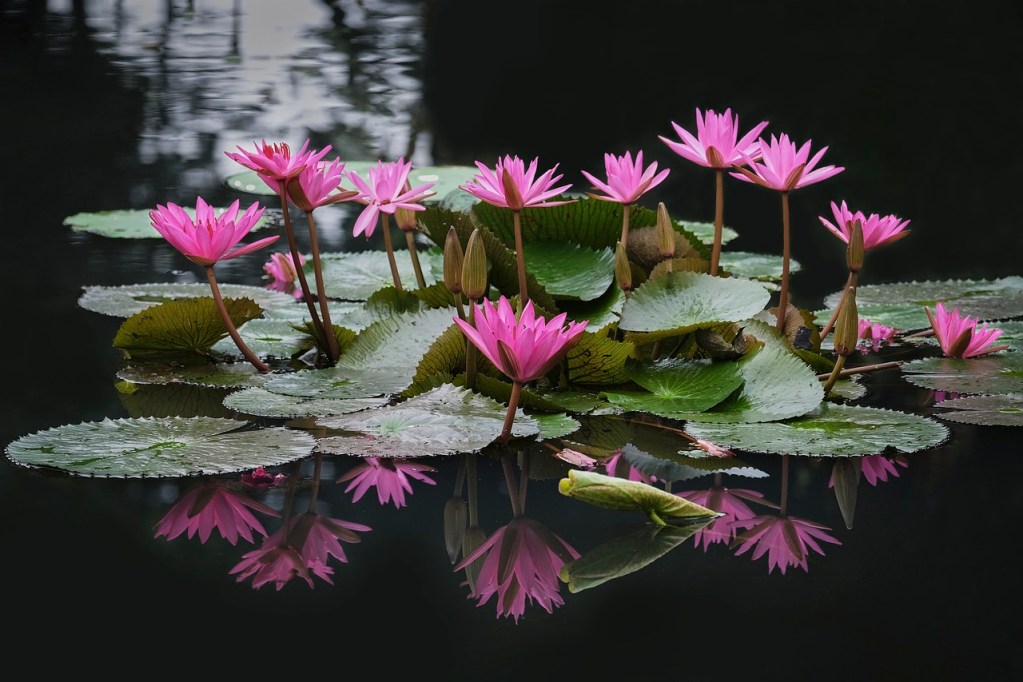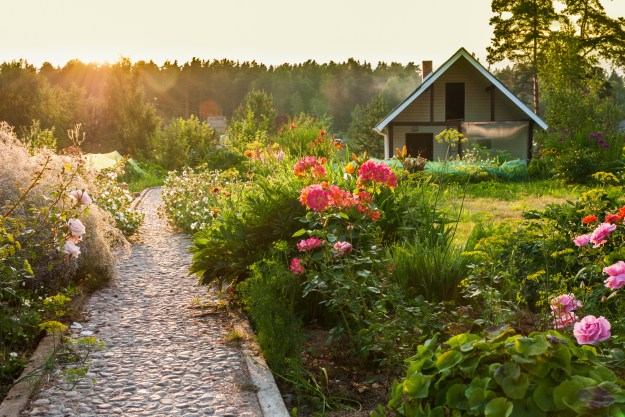
Water features are a beautiful way to make your yard or garden feel more serene. They can also provide a water source for local wildlife, including migrating birds in search of a drink. Ponds can also be a unique type of garden, and there are many wonderful water plants you can grow in your pond to support birds, frogs, and fish or just to look nice. Two of the most common pond plants are water lilies and lotuses. However, these plants are also frequently mistaken for each other.
In this guide to the water lily vs. lotus, we’ll explain the similarities and differences between these plants so you can choose the best one for your pond.
Why are water lilies and lotuses easy to confuse?

When it comes to water lily vs. lotus, they have a lot in common. Both grow on the surfaces of ponds. Visually, both also come in a variety of colors and sizes, and they have broad leaves and flowers sitting on or poking above the water. Water lilies and lotuses bloom through the summer, typically starting in June and continuing through to October.
They have some similar care requirements, too. Both water lilies and lotuses prefer warm weather and full sun. Although they appear to float on the surface, both also actually root in the soil at the bottom of ponds and grow up through the water. Both water lilies and lotuses will also spread out, filling whatever body of water they’re planted in over time.
What’s the difference between a water lily and a lotus?

While both plants are quite similar, there are some differences you can use to distinguish the two and help you choose the right one for your pond. Lotus flowers have stalks that extend above the water, adding a height element to your pond. Water lilies do not have this longer stem, so their flowers sit on or just above the surface of the pond. They also have different leaf shapes. Water lily leaves have a notch in them, making the plants appear to have heart-shaped or hoof-shaped leaves, and they tend to be thicker than lotus leaves.
Water lily flowers can last longer, and there are even some varieties that bloom at night. Lotus flowers tend to fade faster, but they leave a unique-looking seed pod behind that can still provide visual interest to your pond. Additionally, water lilies are a hardier plant.
Choosing the right one for your pond

Many of the differences between water lilies and lotuses are aesthetic. If your backyard water feature is the focal point of summer night gatherings, then a night-blooming water lily might be the way to go. On the other hand, if you enjoy a more three-dimensional display, then the longer stems of the lotus flowers might be a better choice.
While you can plant both plants in the same pond, this isn’t recommended for smaller ponds. Since both plants spread, they will compete for space and resources. When it comes to care, water lilies are typically preferred by beginners, because of their somewhat hardier nature.
Water lilies and lotuses are both beautiful water plants that have a lot in common. Whether you’re trying to identify a plant that already grows in your pond or trying to decide which to plant, hopefully, you now have a better understanding of what these plants share and what separates them from each other. You can’t go wrong with either choice, and much of the decision comes down to aesthetic preferences.
Editors' Recommendations
- Creeping thyme is a colorful alternative ground cover to grass – what to know
- How to grow lantana: Everything you need to know
- What should you do if you find a snake in your garden?
- Here’s what you should know about the updated USDA Hardiness Zone Map
- What is a chaos garden, and why should you start one this spring?



